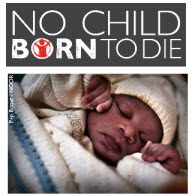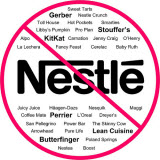Sunday
Oct162011
Planting Seeds of Change
 Sunday, October 16, 2011
Sunday, October 16, 2011  We've all heard the saying "Give a man a fish and you feed him for a day; teach a man to fish and you feed him for a lifetime." This proverb can be so aptly applied to so many different situations. When I think about how to best help people in need, regardless of the type of need, it is something that I like to keep in mind. Addressing the symptoms of a problem provide temporary relief, but addressing the true roots of those problems create solutions.
We've all heard the saying "Give a man a fish and you feed him for a day; teach a man to fish and you feed him for a lifetime." This proverb can be so aptly applied to so many different situations. When I think about how to best help people in need, regardless of the type of need, it is something that I like to keep in mind. Addressing the symptoms of a problem provide temporary relief, but addressing the true roots of those problems create solutions.Today is Blog Action Day and bloggers around the world are blogging about food and famine. When I was researching my post for today, I ran across some statistics that make you stop in your tracks. On ONE.org, they share some quick facts about food and agriculture:
- Approximately 925 million people around the world are hungry.
- Growth in agriculture is twice as effective at reducing poverty as growth in other sectors.
- In sub-Saharan Africa, 2/3 of people are employed in agriculture.
- Women produce 60 to 80% of food in sub-Saharan Africa.
In UNICEF's post about higher food prices, I read some more jarring statistics. In Kenya, people spend half of their income on food and in Somalia they spend more than half of their income on food. That means that when food prices rise, as they have been, the people in those countries suffer even more than we do. Those rises in food prices have a much bigger impact on their budget than it does on ours. Especially if they are already buying less food than the really need and already buying the least expensive food possible, there isn't really anywhere to cut back, other than by eating less food and being even more hungry.
Getting food and water to people who are suffering from the drought and famine in Africa is an essential and urgent need. But solving the problem that so many Africans are facing, requires an investment in their future. This is why our family will be supporting many of the Plan Canada Gifts of Hope projects that invest in the livestock, the seeds, the infrastructure, and the education that is needed to help communities further develop and grow their agricultural sector. Some of the projects you can support through Plan Canada (and its affiliates in other countries) include:
- Baby chicks
- Peanut butter projects
- Endless harvest
- Beekeeping kits
- Mango trees
- Livestock, such as baby chicks, goats, rabbits, pigs, cows, hens and roosters and more Rabbits
Projects like these not only create economic growth, but they also helps to feed families locally and make communities more independent. We need to reduce our global dependence on companies like Monsanto and invest in small scale local agriculture. When I give, I want it to be a gift that helps plant seeds of change.




















Reader Comments (6)
The Gifts of Hope are a great idea. It's also easier for kids to see exactly how they are helping.
We've been doing the targeted gifts with Plan Canada for a few years and I love that the kids can choose something specific to donate towards. Our monthly contribution goes towards clean water (building wells etc) b/c my boys were blown away to learn that some kids don't have access to clean drinking water.
These small, specific donations make a really great Christmas gift too!
I hadn't heard of Blog Action Day! And me a blogger! Damn.
We give to Plan USA, and began doing so on the advice of Kick Kristof, the New York Times columnist who has done an incredible job of personalizing an issue as huge as famine.
I donate regularly to the Canadian Hunger Foundation. I like their focus on mothers and grandmothers, and you can buy specific gifts (e.g. goats) for not a lot of money. It's also important to remember that we have hunger here in our own country. Donating to local charities working to eradicate hunger here is just as important as thinking globally
Misty:
I completely agree that donating to local charities is important too. We donate to and volunteer at the Ottawa Food Bank and I give clothing I'm done with to a local women's shelter.
Alison:
Yes, that is one of the reasons we like it. A portion of my kids' allowance goes into a charity jar and they pick things from the Plan Canada catalogue.